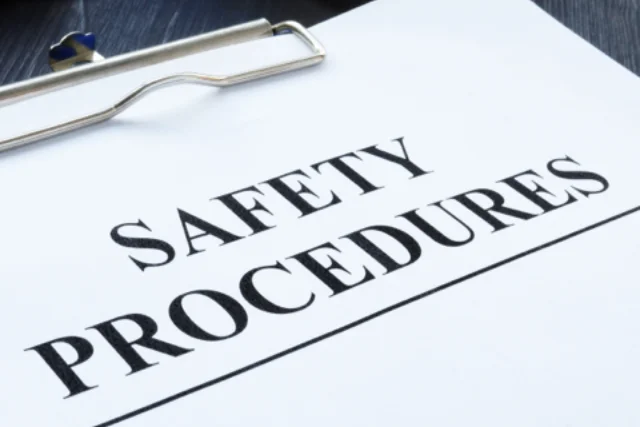When it comes to safety, do you want to be lucky, or do you want to be good? To be good, you have to avoid complacency every day. Far too many companies rely on luck, and unfortunately, when their luck runs out, the result is often a serious accident resulting in injury, property loss, damage, fines, or worse. If you have worked on a job site, in a manufacturing facility, or held a supervisory role, you have probably heard the following excuses or different versions of them many times.
- I’ve been doing this for 20 years. I’ve always done it this way.
- It will just take a second. I’m in a hurry.
- That will never happen to me. I’m tough.
- Everyone does it that way. It’s low risk.
- I didn’t have time. Safety rules slow down my production.
- We aren’t on OSHA’s radar. We are a small company.
- Safety is no big deal. I have a job to do.
- I’ve got this. I know what I’m doing.
- We didn’t know we needed it. That doesn’t apply to us.
- There is nothing to tie off to up there.
- It’s inconvenient/uncomfortable. I wasn’t thinking. I forgot.
Employees can get a false sense of security that they won’t have an incident or accident because they have experience or have always done things a certain way. Still, these excuses for not doing the job safely can have long-term consequences. When employees become complacent with safety, significant issues can follow. Accidents, injuries, fatalities, and hospitalizations instantly change lives and shatter families. Communities can also be affected when there is a workplace accident. No one should tolerate these excuses. Don’t take shortcuts regarding the safety of your employees or allow your workers to ignore safety rules.
What can be done to counter these excuses? Safety professionals often get a negative reputation for only using fear and threats to change unsafe behaviors or to punish those not following safety procedures. While there must be strict policies to deal with not working safely, building a positive safety culture at your organization is an effective method to combat complacency. The following measures support best practices for a safe workplace:
- Establish safety leadership. Advocate for safety in your workplace and model safe behavior. Engage, coach, and inspire employees to work safely at all times. Set high expectations regarding workplace safety and help employees understand why safety improvements should be made.
- Be proactive. OSHA can show up on-site at any time and in almost every industry, large or small. OSHA covers most private sector employers and employees in all 50 states, the District of Columbia, Puerto Rico, the Virgin Islands, American Samoa, Guam, and other U.S. jurisdictions. You should assume that OSHA standards apply to your business. The best way to be prepared is to maintain a safe workplace and ensure your employees follow OSHA standards. Thinking that OSHA standards don’t apply to your organization or that your business is not on OSHA’s radar is most likely the wrong assumption. Being proactive in your approach to safety reduces workplace incidents, accidents, and illnesses.
- Communicate. Listen to safety concerns raised by employees. Hold safety meetings and form safety committees. Obtain buy-in by allowing workers to be a part of the process. Connect with employees and give constructive feedback to teach and retrain employees on safe practices.
- Conduct safety audits. Bringing in someone from outside of your company can help. A safety consultant can notice things those working at the facility or job site daily can miss. Safety audits can identify and fix potential problems before they become an issue and will help you get an outside perspective to improve the safety of your job site or facility.
- Train. Provide ongoing safety training and education. Behavior is changed through education, training, and feedback. Knowledge of the correct safety procedures can prevent accidents, injuries, and illnesses. Additionally, you can support career growth within your company with safety training.
- Mentor. New employees and young workers need extra attention, support, and training. Build safe routines and habits from the start by ensuring those newly hired employees are thoroughly trained and supported in their new roles.
- Encourage personal responsibility. Point out the dangers of unsafe behaviors and how the unsafe acts can lead to pain, suffering, injury, illness, or even death. Reiterate to workers that it can happen to them if they are engaged in any unsafe acts and that their unsafe act(s) could also endanger those around them.
- Make the connection between safety and quality. Help employees understand the benefits of working safety. Safety plays a role in a company’s reputation, revenue, and production quality. Safe work with no accidents or incidents promotes a thriving, successful business. Show employees how their positive safety behavior change(s) can lead to a stronger and more successful business.
- Share safety responsibility. Safety is a collaborative effort. Establish health and safety as the top priority of your organization. Demonstrate to employees that you care about their health and well-being by prioritizing safety in your organization and requiring participation in shared safety goals from everyone on your team. Hold supervisors and employees accountable through not only negative disciplinary programs but also by acknowledging safe behaviors observed through positive reinforcement.
- Offer incentives. Encourage engagement in safety with rewards and recognition. Participate in safety awareness campaigns. Offer praise for those working safely, encouraging employees to continue safe practices. Incentives can range from company logo merchandise and bonuses to positive recognition for working safely. Remember the old saying, “A pat on the back can often go much further than a kick in the pants.”
Complacency can happen in every industry, but it is important to remain vigilant to ensure a safe workplace. The consequences of unsafe actions and behaviors can be detrimental no matter what excuses you hear.
Promoting safe work habits and educating workers on the reasons to work safely can positively influence many lives. The goal is for workers to go home happy, healthy, and injury free, so they can pursue their goals, spend time with their loved ones and enjoy their life.
We specialize in developing positive safety cultures and have been actively helping companies improve their safety programs for over two decades.
We provide written safety manuals and audits. We also offer a wide variety of safety training options. We’d love to customize our services to help you meet your safety goals. Don’t hesitate to contact us today at 919-417-2139 or so we can discuss your safety needs.


